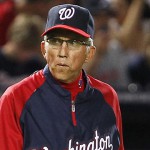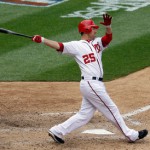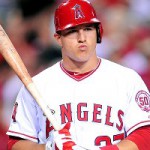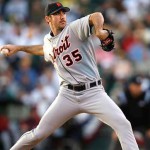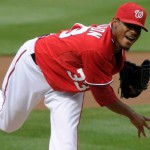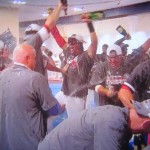Just as an FYI, I’ve created a link to a spreadsheet of key events, dates and deadlines for this coming MLB off-season. A quick summary of those dates is listed below. With the new CBA and new rules regarding contracts and options, I still have some guesses as to when the exact date for some contract specific items are. Feel free to comment/provide feedback if you know the exact date.
Bolded/Italicized Events are post-2012 season awards, official or otherwise.
| Date | Event | Nats Specific Impact |
| Oct 19th, 2012 | MLB Comeback Players of the Year AL and NL | Adam LaRoche possibly getting some votes? |
| Oct 23rd, 2012 | Sporting News Comeback Players of the Year AL and NL | Dunn, Posey winners |
| Oct 25th, 2012 | Fielding Bible Awards given | |
| Oct 28th, 2012 | Roberto Clemente Award given | Zimmerman nominated |
| Oct 28th, 2012 | Last actual day of 2012 World Series; official end of 2012 season | n/a |
| Oct 29th 2012 | Official start of FA period (12:01am the day after the last game of the WS) | LaRoche, Jackson, Burnett, Gonzalez, Duke, DeRosa |
| October 30th, 2012 | Rawlings AL & NL Gold Glove Announcements | Desmond, LaRoche are finalists |
| Nov 1st, 2012 | Team and player options must be decided three days after the end of the World Series. 10/31/11 at midnight | LaRoche, Burnett have options from the Nats. |
| Early November? | Clubs have to re-set their 40-man rosters, moving all 60-day DL players back to active. Happened in the past about 11/9. May be changed date w/ new CBA | |
| Nov 2nd, 2012 | 5pm: Deadline to make Qualifying offers for your own Fas (average of top 125 salaries or $13.3M for 2012). 5 days after end of WS | Nats likely to make Qos to both Jackson and LaRoche, neither of whom is likely to take the deal and thus guaranteeing the Nats draft pick compensation if we lose both guys. |
| Nov 2nd, 2012 | HoF “Veterans Committee” releases ballot. Officially announced12/3/12 | |
| Nov 3rd, 2012 | 5 days after WS ends: Free agent filing period and exclusive negotiating window ends at 12:01 a.m. ET. Free agents can sign with any team. | LaRoche, Jackson, Burnett, Gonzalez, Duke, DeRosa |
| Nov 3rd, 2012 | Free Agency granted to all eligible Minor League free agents (5 days after the end of the WS). Eligibility done on service time; 6 years ML service for college draftees or 7 years ML service for HS draftees or free agents under the age of 18. | http://www.baseballamerica.com/blog/prospects/2012/11/minor-league-free-agents-2012/ has full list; notable names include Arneson, Pucetas, Severino, VanAllen |
| Nov 4th, 2012 | Wilson Defensive Player of the Year awards, given by MLB to best defensive player on each club. | Adam LaRoche wins the award for the Nationals. |
| Nov 5th, 2012 | MLBPA announces “Players Choice” awards: Player of the year, Comeback Player of the year, etc | No Nats awarded MLBPA’s version of the BBWAA awards. |
| Nov 7th, 2012 | BBWAA Award Nominees announced on MLB networks | |
| Nov 7-9, 2012 | GM Meetings, Palm Springs, California for 2012 | Rizzo may be laying groundwork for big FA signings. |
| Nov 8th, 2012 | Last day for players to accept arbitration from current club. | Would the Nats offer arbitration to its Fas? |
| Nov 8th, 2012 | Louisville Slugger Silver Slugger Awards | LaRoche, Desmond likely candidates. |
| Nov 9th, 2012 | 12 Days after WS ends: Players must accept or reject Qualifying Options | LaRoche only Natioanls FA to get a QO. |
| Nov 12th, 2012 | AL, NL Jackie Robinson Rookie of the Year Awards | Harper or Willey? We’ll see if Harper’s great finish gets him the award. |
| Nov 13th, 2012 | AL and NL Manager of the Year | Johnson should get the NL manager of the year for the Nats winning 17 more games than 2011. |
| Nov 14th 2012 | AL and NL Cy Young | Gio Gonzalez in the discussion but likely to lose out. |
| Nov 15th 2012 | AL and NL Most Valuable Player | No real Nats MVP candidates; perhaps LaRoche gets some top 5 votes. |
| Nov 15-18th, 2012 | WBC Qualifier #4, Taiwan (Chinese Taipei, New Zealand, Phillipenes, Thailand) | |
| Nov 15-19th, 2012 | WBC Qualifier #3, Panama City (Brazil, Columbia, Nicaragua, Panama) | |
| Mid November, 2012 | Sporting News Executive of the Year announced | I think Mike Rizzo is NL GM of the year. |
| Mid November, 2012 | Owners Meetings, ? Location for 2012 | |
| Nov 20th, 2012 | Day to file reserve lists for all Major and Minor League levels. In other words, Last day to add players to 40-man to protect them from the Rule5 Draft | A host of rule-5 eligible decisions pending for Nats; Rosenbaum, Karns, Kobernus, Hood, etc. |
| Nov 30th, 2012 | Midnight: Deadline for teams to Tender contracts to arbitration eligible players. If not tendered, those players immediately become free agents. | Lannan, Gorzelanny, Flores possible non-tenders here. |
| Early December, 2012 | Last day to request outright waivers to assign player prior to Rule 5 Draft | |
| Dec 3rd-6th, 2012 | Winter Meetings, Nashville, TN for 2012 | |
| Dec 3rd, 2012 | HoF “Veterans Committee” officially releases ballot that was made public 11/2/11. | |
| Early December, 2012 | Baseball America announces its Executives of the Year | |
| Dec 4th, 2012 | MLB Balloting results announced for Hall of Fame Ford C. Frick Award for excellence in baseball broadcasting | |
| Dec 6th, 2012 | Rule 5 Draft. Occurs at Winter meetings | Nats are likely to at least participate in the Rule5 draft, but their draft position leaves them picking last of the 30 teams. A utility infielder or a bullpen arm could be had here. |
| Dec 31st, 2012 | Deadline for BBWAA ballots for HoF voting. | |
| Jan 9th, 2013 | Hall of Fame BBWAA voting announced; the HoF class of 2013. | |
| Jan 5-15, 2013 | Salary arbitration filing period | Nats could have as many as 10 arbitration cases to settle (but more likely 7 or 8). |
| Mid January 2013 | Salary arbitration figures exchanged | |
| Feb 1-21, 2013 | Salary arbitration hearings (actual hearing date per player picked at random) | |
| Mid February 2013 | Mandatory Spring Training reporting date for Pitchers and Catchers | |
| Mid February 2013 | Voluntary Spring Training reporting date for non-pitchers and catchers | |
| Early March 2013 | Contracts of unsigned players who are not yet eligible for Arbitration may be renewed | |
| Mar 2-5, 2013 | WBC First Round, Pool B in Taiwan (Korea, Netherlands, Australia, tbd) | |
| Mar 2-6, 2013 | WBC First Round, Pool A in Japan (Japan, Cuba, China, tba) | |
| Early March 2013 | First Spring Training Game for the Nats | |
| Mar 7th-10th, 2013 | WBC First Round, Pool C in Puerto Rico (Venezuela, Puerto Rico, Dominican Republic, tba) | |
| Mar 7th-10th, 2013 | WBC First Round, Pool D in Phoenix (USA, Mexico, Italy, tbd) | |
| Mid March 2013 | Last day to place a player on unconditional release waivers and pay 30 days termination pay instead of 45 days. | |
| Mar 17th-19th, 2013 | WBC Championship round, San Francisco, CA | |
| Late March 2013 | Deadline to request unconditional release waivers without having to pay the player’s full salary | |
| March 31st, 2013 | 2013 Season Opener | |
| April 1st, 2013 | Traditional Opening Day (Cincinnati) | Nats open at home to Miami |
| April 15th, 2013 | Jackie Robinson Day |
